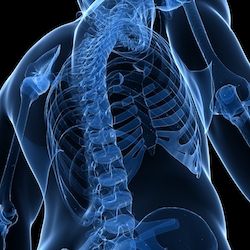As many as 85% of all people globally have experienced low-back pain in their lifetimes. No one is exempt whether sedentary or a professional athlete. It is so common that low back pain the the most frequently reported reason that people see their doctor. For that reason alone, this study holds particular promise. Dry needling for low back pain is becoming more frequently used as a treatment option. But what is its effectiveness?
In this study, Evidence for Dry Needling in the Management of Myofascial Trigger Points Associated With Low Back Pain: A Systematic Review and Meta-Analysis, published in Physical Medicine and Rehabilitation, explores this very question and compares its effectiveness to other lower back pain (LBP) therapies. “This systematic review and meta-analysis is a comprehensive and quantitative evaluation of the current evidence of the post-intervention and follow-up effectiveness of dry needling alone on the treatment of MTrPs associated with LBP compared with other treatments, including laser therapy, tender point needling, superficial dry needling, acupoint acupuncture, sham dry needling, and physical therapies.”
According to the researchers, “Dry needling that targets MTrPs can disrupt the dysfunctional neuromuscular activity in the muscles, decrease muscle tone, and normalize the neurochemical pathways of muscles. Therefore, it has been used by a growing number of physical therapists, chiropractors, and other clinicians in health care and clinical rehabilitation in recent years.”
“In clinical practice, dry needling usually refers to deep dry needling, which is a minimally invasive procedure during which a thin filiform needle is directly inserted into an active myofascial trigger point (MTrP), with the condition of eliciting a local twitch response.”
Studies were included if they (1) adopted the randomized controlled trials (RCT) design, (2) included patients diagnosed with LBP with the presence of MTrPs, (3) used dry needling alone as an intervention, and (4) used pain intensity and/or functional disability as outcome measure to assess the curative effect. By contrast, studies were excluded if (1) MTrPs were not defined using the criteria of Simons et al, (2) dry needling combined with acupoint acupuncture was used, (3) different types of dry needling (in the text, it is referred to as deep dry needling, excluding superficial dry needling) were compared with one another, (4) full text cannot be obtained, and (5) RCTs had no available data.
Outcomes of Dry Needling Therapy Review
Conclusion / In comparison with other treatments, the effectiveness of dry needling of MTrPs for LBP at post-intervention was assessed in terms of pain intensity and functional disability in 10 trials, 673 patients and 8 trials, with 353 patients respectively.
The low-to-moderate-quality evidence showed that compared with other treatments, dry needling resulted in significant reduction in pain intensity and functional disability at post-intervention. However, dry needling plus other treatments for LBP was more effective than dry needling alone in pain intensity reduction at post-intervention, but the quality of evidence was low. other forms of therapy included: acupoint acupuncture; MTrP sham dry needling; and super laser therapy, tender points needling, standard physical therapy, local anesthetic injection, and dry needling plus neuroscience education.
Source: Evidence for Dry Needling in the Management of Myofascial Trigger Points Associated With Low Back Pain: A Systematic Review and Meta-Analysis. Archives of Physical Medicine and Rehabilitation , Volume 99 , Issue 1 , 144 – 152.e2. doi.org/10.1016/j.apmr.2017.06.008





